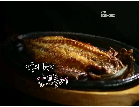Fisheries resources have been declining due to the changes in the marine environment, caused by climate change and environmental pollution, as well as overfishing and overexploitation of fishing. In the past, fisheries resources were regarded as inexh...
http://chineseinput.net/에서 pinyin(병음)방식으로 중국어를 변환할 수 있습니다.
변환된 중국어를 복사하여 사용하시면 됩니다.
- 中文 을 입력하시려면 zhongwen을 입력하시고 space를누르시면됩니다.
- 北京 을 입력하시려면 beijing을 입력하시고 space를 누르시면 됩니다.
부가정보
다국어 초록 (Multilingual Abstract)
Various policies and legislations have been proposed to mitigate a decline in fisheries resources and to recover fisheries resources state. However, there are few scientific studies on the relevant laws and regulations as well as analyses on the relevant policies.
This study investigates biological and economic effect about rule of fisheries closures and catch size limit for chub mackerel. The rule provides 1 month closed season from April 1 to June 30 and minimum 21㎝ catch size limit.
First, this study estimates changes in the fisheries resources stocks and the catches for the next 10 years by the application of the bioeconomic model (Leslie Matrix). Second, this study shows the economic effects by the analysis of the changes in the gross value of production and the Net Present Value. In this case, a social discount rate of 5.5% is applied to the NPV.
The study demonstrates that the amount of fisheries resources and catches has continuously decreased with the existing regulations or without regulation, and the resources are expected to recover with the minimum length limit above 30cm in one month closed season or closed fishing period for at least more than 3 months.
The gross value of production is expected to increase by expanding the closed fishing period and the limited size of the fish, while the NPV is expected to drop as the minimum length limit is above 30cm.
These results indicate that the resources and the catches are expected to recover depending on the closed season length and the minimum-length limit. Furthermore, the increased gross value of production is expected to bring economic benefits to the fishing industry.
Fisheries resources have been declining due to the changes in the marine environment, caused by climate change and environmental pollution, as well as overfishing and overexploitation of fishing. In the past, fisheries resources were regarded as inexhaustible, however, the advancement of fishing technology and the improvement of fishing capacity lead to a dramatic increase in the catches, resulting in a decline in fisheries resources.
Various policies and legislations have been proposed to mitigate a decline in fisheries resources and to recover fisheries resources state. However, there are few scientific studies on the relevant laws and regulations as well as analyses on the relevant policies.
This study investigates biological and economic effect about rule of fisheries closures and catch size limit for chub mackerel. The rule provides 1 month closed season from April 1 to June 30 and minimum 21㎝ catch size limit.
First, this study estimates changes in the fisheries resources stocks and the catches for the next 10 years by the application of the bioeconomic model (Leslie Matrix). Second, this study shows the economic effects by the analysis of the changes in the gross value of production and the Net Present Value. In this case, a social discount rate of 5.5% is applied to the NPV.
The study demonstrates that the amount of fisheries resources and catches has continuously decreased with the existing regulations or without regulation, and the resources are expected to recover with the minimum length limit above 30cm in one month closed season or closed fishing period for at least more than 3 months.
The gross value of production is expected to increase by expanding the closed fishing period and the limited size of the fish, while the NPV is expected to drop as the minimum length limit is above 30cm.
These results indicate that the resources and the catches are expected to recover depending on the closed season length and the minimum-length limit. Furthermore, the increased gross value of production is expected to bring economic benefits to the fishing industry.
목차 (Table of Contents)
- Ⅰ. 서론 1
- 1. 연구의 배경 및 목적 1
- 2. 연구의 방법 및 내용 4
- Ⅱ. 선행연구 5
- 1. 어업관리수단 분석에 관한 선행연구 5
- Ⅰ. 서론 1
- 1. 연구의 배경 및 목적 1
- 2. 연구의 방법 및 내용 4
- Ⅱ. 선행연구 5
- 1. 어업관리수단 분석에 관한 선행연구 5
- 2. 고등어의 자원생태학적 특성에 관한 선행연구 9
- Ⅲ. 고등어의 생태 및 생산현황 10
- 1. 고등어의 생태 10
- 2. 어업의 현황 16
- 3. 포획·채취금지 규정현황 20
- Ⅳ. 분석 방법 및 자료 23
- 1. 분석 방법 23
- 2. 분석 자료 27
- Ⅴ. 분석 결과 34
- 1. 생물학적 효과 34
- 2. 경제학적 효과 44
- Ⅵ. 요약 및 결론 52
- 1. 연구 요약 및 결론 52
- 2. 연구의 한계점과 시사점 54
- 참고문헌 57








